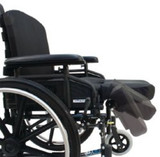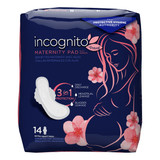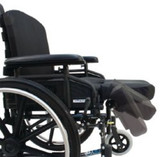8 Tips To Make Travel In A Wheelchair By Plane Easier
8 Tips To Make Travel InA Wheelchair By Plane Easier
Air travel accessibility is crucial for ensuring that everyone, regardless of physical ability, can explore the world. For wheelchair users, navigating airports and airplanes presents unique challenges, such as limited seating options, narrow aisles, and inadequate restroom facilities. These obstacles can make travel daunting and stressful.
This article aims to provide 8 Tips To Make Travel InA Wheelchair By Plane Easier. These practical tips are designed to help you prepare effectively and enhance your flying experience. From arriving early at the airport to knowing your rights as a disabled traveler, these insights will empower you to travel with confidence and ease.
1. Arrive Early
Recommended Arrival Time for International Flights
Arriving at the airport at least three hours before an international flight is crucial. This timeframe allows for potential delays, unexpected obstacles, and gives you ample time to navigate through the check-in process and security procedures without feeling rushed.
Importance of Allowing Time for Check-In and Security Procedures
Airports can be unpredictable. By arriving early, you gain flexibility to handle any issues that might arise during check-in or security screenings. Wheelchair users often requireadditional assistance, so having extra time ensures you receive the necessary support without added stress.
Strategies for Navigating Busy Airports
Use Airport Maps: Familiarize yourself with the layout of the airport. Many airports provide maps on their websites.
Seek Assistance: Request help from airport staff who can guide you through busy areas.
Priority Lanes:Utilize priority lanes available for disabled travelers to speed up the security process.
These strategies help make your airport experience smoother, ensuring you reach your gate comfortably and on time.
2. Contact Airline and TSA Cares
Informing the Airline About Wheelchair Needs
When planning your trip, it's crucial to inform the airline about your wheelchair needs. Contact the airline's special assistance department well in advance to communicate:
Type of wheelchair: Manual or power
Specific requirements:Assistance with boarding, deplaning, or seating accommodations
Battery type: If using a power wheelchair, specify whether it's equipped with a lithium-ion or dry cell battery
Requesting Assistance from TSA Cares
The TSA Cares program offers additional support for travelers with disabilities through the security process. To request assistance:
Call the TSA Cares helpline at least 72 hours before your flight.
Provide details about your travel itinerary and specific needs.
Arrange for a Passenger Support Specialist to assist you through security checkpoints.
Benefits of Proactive Communication
Proactively communicating your needs ensures:
Smooth travel experience: Reduces unexpected delays and complications.
Enhanced support: Airline staff and TSA agents are better prepared to offer tailored assistance.
Peace of mind: Knowing that arrangements are in place allows you to focus on enjoying your journey.
“Being proactive about communication can significantly alleviate stress and ensure a smoother travel experience.”
3. Pack Essentials
Packing the right essentials can make your journey smoother and stress-free. Here are some crucial items to consider:
Essential Medical Supplies
Medications: Ensure you pack all necessary prescriptions, including extra doses in case of delays.
Medical Documents: Carry copies of your prescriptions and any relevant medical documentation.
Assistive Devices: Bring any additional aids such as portable oxygen, CPAP machines, or other necessary devices.
Importance of Backups for Critical Items
Having backups for critical items is vital. Pack duplicate chargers for power wheelchairs, extra batteries, and additional parts that may be prone to wear and tear during travel. Keeping these in your carry-on ensures they are always within reach.
Quick-Fix Supplies
Minor repairs might be needed during your trip. Consider including:
Zip Ties
Duct Tape
Bubble Wrap
These items can help secure loose parts or provide temporary fixes, ensuring your wheelchair remains functional until professional repair is possible.
Packing thoughtfully can alleviate many common travel hassles, keeping you well-prepared for any situation.
4. Know Your Rights as a Disabled Traveler on Airplanes
Understanding the Air Carrier Access Act (ACAA) is crucial for travelers with disabilities. The ACAA ensures that individuals with disabilities receive equal access to air travel services and accommodations. This law mandates airlines to provide necessary support, making your flying experience smoother and more comfortable.
Key rights to be aware of include:
Priority Boarding: You are entitled to board the plane before other passengers, allowing you ample time to get settled without the rush.
Seating Accommodations: Airlines must provide appropriate seating arrangements, including movable armrests and accessible seats, if requested in advance.
Assistance with Boarding and Deplaning: Airlines are required toassist you in boarding, deplaning, and making connections between flights.
Knowing these rights can empower you to advocate for your needs confidently while traveling by air.
5. Prepare Your Wheelchair for Air Travel
Manual Wheelchair Preparation for Air Travel:
Remove Wheels: Detach the wheels and any other detachable parts to prevent damage and make handling easier.
Secure Loose Parts: Use zip ties or duct tape to secure any loose elements.
Label Components: Clearly label all parts with your contact information in case they get separated.
Power Wheelchair Guidelines for Air Travel:
Check Battery Regulations: Verify that your wheelchair's battery complies with airline regulations. Lithium-ion batteries often have specific requirements.
Proper Packaging: Ensure the battery is properly packed, ideally in its original packaging or a protective case.
Consult an ATP Technician: If necessary, get professional advice on how to prepare your power wheelchair for air travel.
Ensuring these steps are taken can minimize the risk of damage and ensure a smoother travel experience.
6. Utilize Pre-Boarding Options When Flying with a Wheelchair
Pre-boarding benefits for disabled travelers on planes cannot be overstated. Airlines typically offer early boarding or priority seating options to ensure that passengers with disabilities have ample time to settle in without the rush of other passengers.
Advantages of Pre-Boarding:
Comfortable Seating: Early boarding allows you to find your seat and get comfortable without feeling rushed.
Stowage of Equipment: You can ensure that your wheelchair and other necessary equipment are properly stored.
Less Crowded Aisles: Boarding before the general rush means less congestion in the aisles, making navigation easier.
Tip: Always inform the gate agent about your needs as soon as you arrive at the gate. This proactive approach helps in securing the pre-boarding benefits you are entitled to.
7. Plan Ahead for Restroom Needs During Flights
Airplane restroom accessibility issues faced by disabled travelers are significant due to the limited space and lack of accessible facilities on most aircraft. The confined quarters can make it challenging for wheelchair users to maneuver, and many planes do not feature fully accessible restrooms. This can be a considerable obstacle for those needing frequent or assisted restroom access.
Strategies for managing restroom needs during flights:
Protective Garments: Consider wearing protective garments such as adult diapers or incontinence pads to minimize the need for restroom visits.
Travel-Specific Devices: Use portable urinals or other devices designed specifically for travel, which can offer greater independence and privacy.
Seat Selection: Try to book seats close to the restroom if possible, making it easier to access facilities when needed.
Hydration Management:Monitor your fluid intake before and during the flight to reduce the frequency of restroom trips without compromising hydration.
These strategies can help mitigate some of the challenges and ensure a more comfortable travel experience.
8. Report Damage Immediately If Your Wheelchair Is Damaged in Transit
Experiencing damage to your wheelchair during transit can be distressing. To navigate the wheelchair damage reporting process when flying with a disability, follow these steps:
Inspect Your Wheelchair: As soon as you receive your wheelchair at your destination, inspect it thoroughly for any damage.
Report Immediately: If you notice any damage, report it to the airline staff at the baggage claim area immediately. Prompt reporting is crucial.
File a Claim: Request to file an official damage report with the airline before leaving the airport. Ensure you get a copy of this report for your records.
Understanding airline policies regarding equipment damage liability is essential:
Airlines are generally liable for repair or replacement costs for damaged mobility equipment.
Familiarize yourself with the specific procedures and compensation limits of your airline.
Keep all receipts and documentation related to repairs or replacements, as these will be necessary for processing claims.
Proactive communication and understanding your rights can help ensure swift resolution in case of wheelchair damage during travel.
Conclusion: Empowering Disabled Travelers to Fly with Confidence
Flying with a disability doesn't have to be daunting. By implementing these 8 Tips To Make Travel InA Wheelchair By Plane Easier, you can navigate the skies with confidence and ease:
Plan Ahead: Arrive early, contact the airline and TSA Cares, and prepare your wheelchair properly.
Know Your Rights: Familiarize yourself with the Air Carrier Access Act (ACAA) to ensure you receive the accommodations you're entitled to.
Pack Wisely: Bring essential medical supplies, backups, and quick-fix items for potential repairs.
Utilize Available Options: Take advantage of pre-boarding to settle in comfortably and plan for restroom needs during flights.
Report Issues Promptly: If your wheelchair is damaged in transit, report it immediately and understand your rights regarding equipment damage liability.
Advocate for yourself throughout your journey. Seek assistance when needed, communicate proactively with airline staff, and leverage available resources. With careful planning and assertiveness, traveling by plane can be a smoother experience. These tips empower you to take control of your travel experience, ensuring that you fly with confidence from start to finish.
FAQs (Frequently Asked Questions)
What should I do to prepare for air travel in a wheelchair?
Arrive early at the airport to allow ample time for check-in and security procedures. It is recommended to arrive at least two hours before domestic flights and three hours for international flights. This helps navigate busy airports and ensures you have enough time to address any unexpected issues.
How can I ensure my wheelchair needs are accommodated by the airline?
Contact your airline in advance to inform them of your wheelchair requirements. Additionally, utilize the TSA Cares program to request assistance during the security process. Proactive communication can significantly enhance your travel experience.
What essential items should I pack when traveling with a wheelchair?
Pack critical medical supplies, carry-on essentials, and quick-fix supplies like zip ties and duct tape. Having backups for important items is crucial in case of emergencies or delays during your travels.
What rights do I have as a disabled traveler on airplanes?
Under the Air Carrier Access Act (ACAA), disabled travelers have specific rights, including priority boarding, seating accommodations, and assistance with boarding and deplaning. Familiarizing yourself with these rights can help ensure a smoother travel experience.
How should I prepare my wheelchair for air travel?
For manual wheelchairs, remove any loose parts and secure wheels properly. If you are traveling with a power wheelchair, check battery regulations and ensure it is packaged correctly according to airline guidelines.
What are the benefits of pre-boarding options for disabled travelers?
Pre-boarding allows disabled travelers to board the plane early, providing time to settle into their seats comfortably without the rush of other passengers. This option can significantly reduce stress during the boarding process.
Recent Posts
-
Wheelchair or Transport Chair?
Choosing between a wheelchair or transport chair requires understanding the unique features and purp …Dec 20th 2024 -
Incontinence Pads
Understanding Incontinence Pads for Effective Urinary Incontinence ManagementIncontinence pads are s …Dec 15th 2024 -
A Comprehensive Guide to Manual Wheelchairs and Transport Wheelchairs
A Comprehensive Guide to Manual Wheelchairs and Transport WheelchairsWhen navigating the world of mo …Nov 12th 2024



